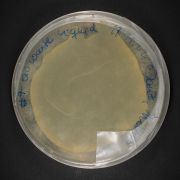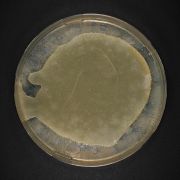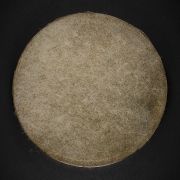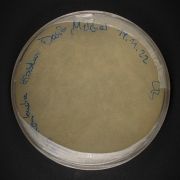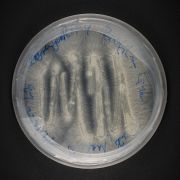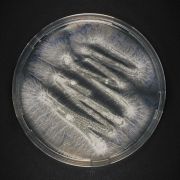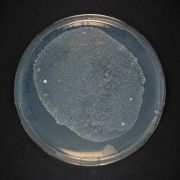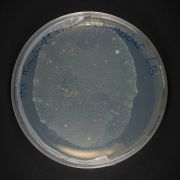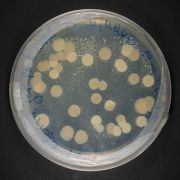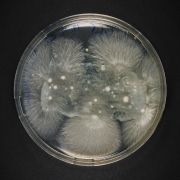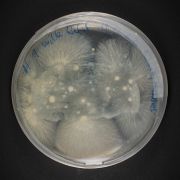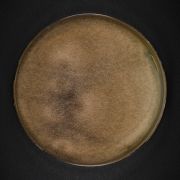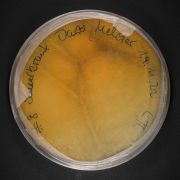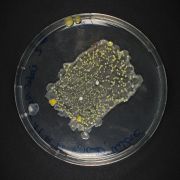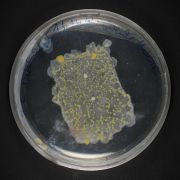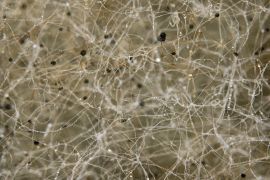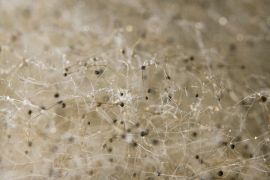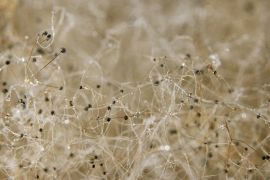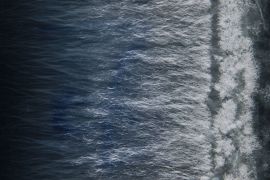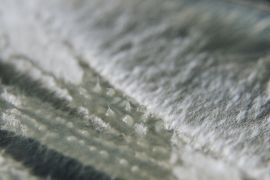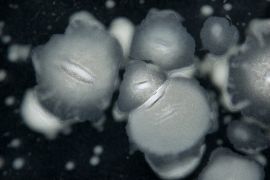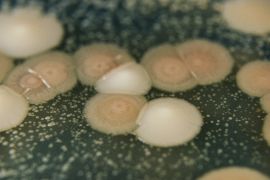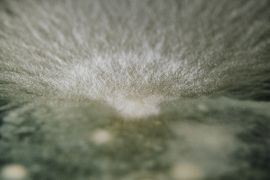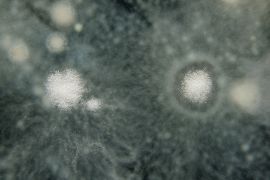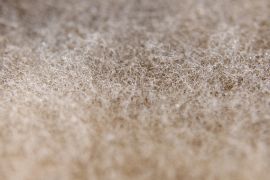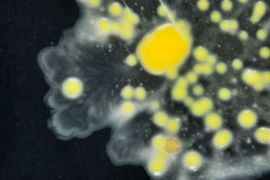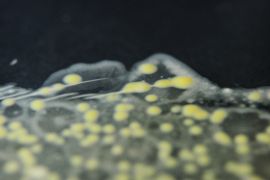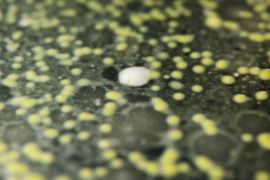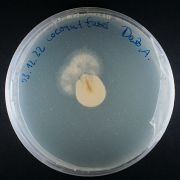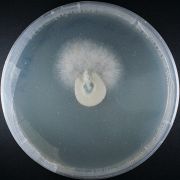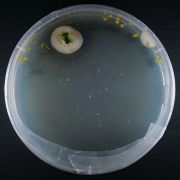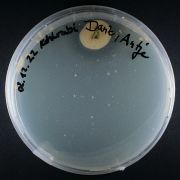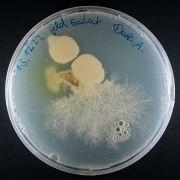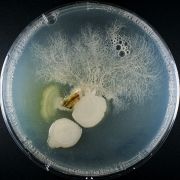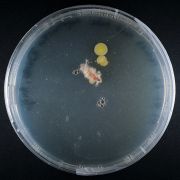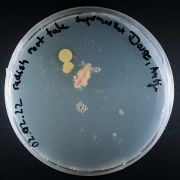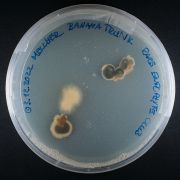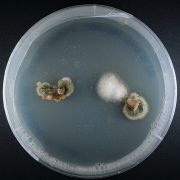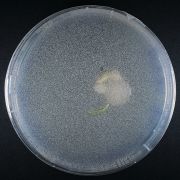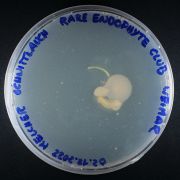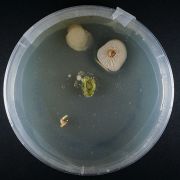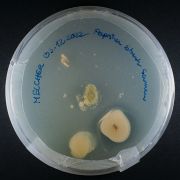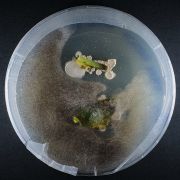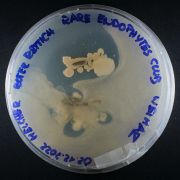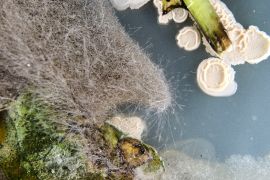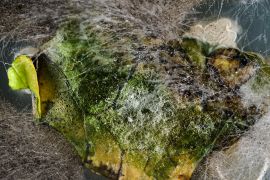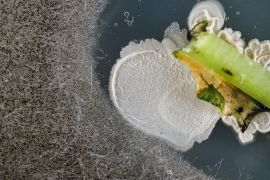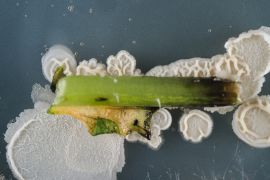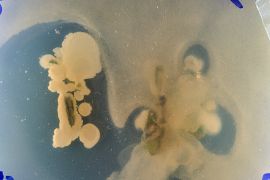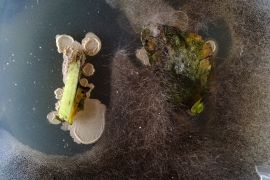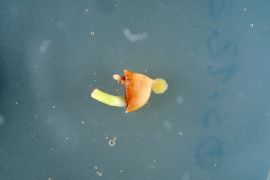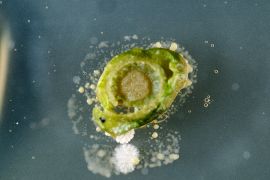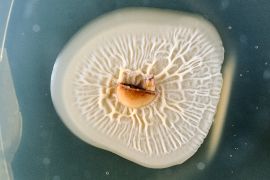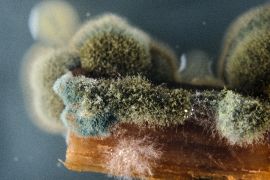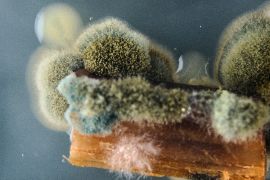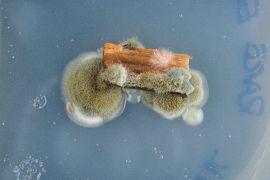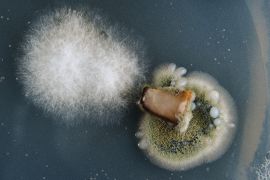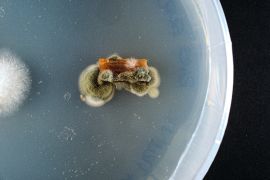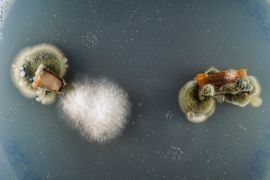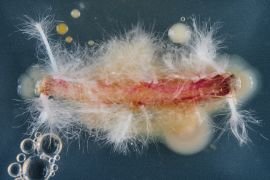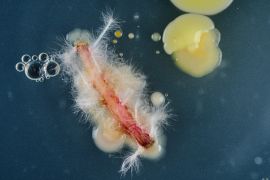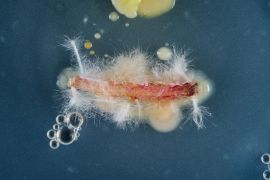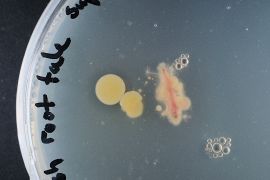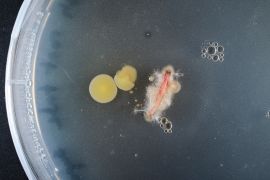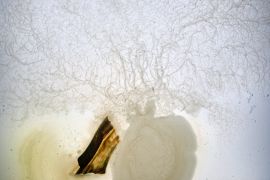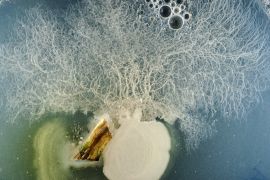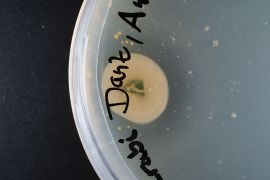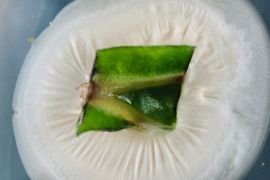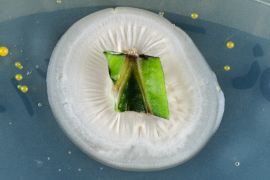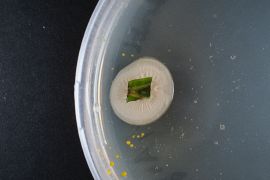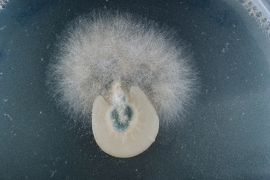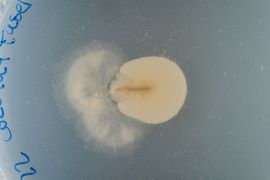Biofilm Workshop with Katja Bühler
Workshop Assignment
During the first Workshop on November 19th, we were asked by Dr. Katja Bühler to collect samples from different environments, surfaces or food to collect microbiological organisms. The goal was to practice working in a biological lab environment, sterile working and discussing the results in the second workshop.
In the following, we present or beautiful petri dishes showing a variety of bacterial and funghoid cultures collected from fermented foods as Hibikus Kombucha, Kimchi, Milk and Water Kefir, as well as some environment samples from bio waste liquids and an isolated one year old water sample from the Kipperquelle (Weimar), which we collected 2021.
We photographed our petri dishes at home with a Fujifilm X-T3, a 7artisans Macro Lens 60mm f2.8 MK II and some macro extension rings on a stable inverted Tripod and some LED Lights from Godox.
| Security Information |
|---|
| Don't open Petri Dishes in sterile environments! Contamination of the lab should always be avoided! If you don't know what is inside, never open! Wear lab masks! |
Petri Dishes (Martin & Antje, 50 % each)
Martin was bringing in his experience/knowledge as a photographer and I was bringing in my experience/knowledge from 3 years working in the bio lab and with organisms and how to handle them.
Hibiskus Kombucha
Hibiskus Kombucha
Kimchi Biofilm (Most propably Kahm Yeast)
Kimchi Biofilm (Most propably Kahm Yeast)
Kimchi Juice
Kimchi Juice
Sauerkraut Juice
Sauerkraut Juice
Macro Close Ups (Martin & Antje, 50 % each)
Martin was bringing in his experience/knowledge as a photographer and I was bringing in my experience/knowledge from 3 years working in the bio lab and with organisms and how to handle them.
(Antje) The pictures show nicely in how many different shapes and colors microbes can appear and as we later learned from the workshops with Zachery Denfeld what those shapes could tell you about the specimen and help roughly identify them for further research.
Microscopic Drawings (Antje)
We were also asked to make a drawing of what was seen under the microscope. This procedure has high educational value, since the microscopic image must be intensively observed. While drawing one needs to break down the structure that is seen to a much simpler one in order to achive an image that resamples the origin. It is also possible to represent specimens which cannot be photographed. The preparation of the drawing requires a great deal of time; short-lived specimens can therefore only be reproduced imperfectly. Last time I used this technique in high school. It was a challenge but also a great excercise which could help me in the future while observing something in nature and use it as an inspiration for my art works.
Endophyte Club with Zachery Denfeld
Workshop Assignment
During the Workshop on from December 2nd to December 3rd, we were asked by Zachery Denfeld to collect samples from different foods of the local supermarket REWE and prepare those samples for the studies of endophytes growing within our samples. We were introduced into the lab routine of preparing plant samples for endophyte identification.
In the following, we present or beautiful petri dishes showing a variety of bacterial and funghoid cultures collected from Paprika, Chives, Lamb's Lettuce, Coconut Fibre, Red Radish, Radish and Banana.
We photographed our petri dishes at home with a Fujifilm X-T3, a 7artisans Macro Lens 60mm f2.8 MK II and some macro extension rings on a stable inverted Tripod and some LED Lights from Godox.
| Security Information |
|---|
| Don't open Petri Dishes in sterile environments! If you don't know what is inside, never open or replate! Wear a mask. Contamination of the lab should always be avoided! |
Petri Dishes (Martin & Antje, 50 % each)
Martin was bringing in his experience/knowledge as a photographer and I was bringing in my experience/knowledge from 3 years working in the bio lab and with organisms and how to handle them.
Macro Close Ups (Martin & Antje, 50 % each)
Martin was bringing in his experience/knowledge as a photographer and I was bringing in my experience/knowledge from 3 years working in the bio lab and with organisms and how to handle them.
